There are a few snake species found here in the Southeastern US that I desperately wanted to see after moving here a coupla years ago. I've been lucky enough to see a few of them already, several during the previous posts about our trip to the sandhills (see past posts on Cottonmouths, Scarlet Kingsnakes, a variety of amphibians, some awesome constrictors, and a few cool odds-n-ends).
The reason I saved my account of finding this species for last is because I think it's my favorite. I don't really know why.....but aside from the Eastern Kingsnake (Lampropeltis getula), the Eastern Diamondback Rattler (Crotalus adamanteus) and the Coral Snake (Micrurus fulvius), I've wanted to see a Coachwhip (Masticophis = Coluber flagellum) very badly!
I'd found one of my four most-saught after species early in the season last year. Two of the species in that list have eluded me (as they are rare in our state), but I finally was able to find the fourth snake on that list during our trip to the sandhills in April.
Above: the habitat where the first Coachwhip was found.
There's just something about the common name for this species that always sounded cool to me. It's different than many common names applied to species of wildlife, which are often just the most obvious and basic description of their appearance.
Five-lined Skink.
Bluebird
Short-tailed Shrew
Red-winged Blackbird
Two-lined Salamander
White-footed Mouse
BORING!
How about this: COACHWHIP!
Sort of descriptive...because the animal does, in fact, look like a bullwhip...or some kind of whip that carriage drivers would have carried. But it is so much cooler than some basic descrptive name that could have been applied to this species like Brown-Tailed Black Snake....or something equally as lame.
The name even sounds tough....like it could beat you up and steal your lunch money: COACHWHIP! (and, yes, it does help when it's written in all caps).
__________________________________________________________________________
We found two Coachwhips during our trip. The first was a juvenile individual that the students in the herp class we were tagging along with found. A very cool little specimen (and my first wild Coachwhip). But, as I mentioned regarding the Cottonmouths....it's neat when someone finds them and you see them...but it's cooler still when you find them yourself.
How fortunate we were that Jeff knew the Sandhills area so well. We visited a spot that he knew about where peices of tin had been scattered around, and started flipping. Normally a sure-fire way to catch snakes. However, it had been cool and alittle rainy during our trip and we were alittle nervous stuff wouldn't show.
Luckily, our worries were unwarranted!
After the second or third piece of tin....success! A huge adult Coachwhip. And a very beautiful one, at that. Check out that jet-black head and those nice rings leading to the beautifully patterned tail (see the close-up shot of the tail pattern in the pictures below).
Check out how big this guy was! Almost six foot tip to tip.
Look at the incredible scale/color pattern on the tail (below). Stunning!
You can also get a feeling for how long the tail is in this picture. The "vent" (or area where the snakes goes to the bathroom out of, near my right pinky) is visible in this picture. Basically a snake's tail starts at the vent.....
He was also pretty easy to handle due to the cool weather, which I'm told is not typical for this snake. Jeff and Ed recounted stories of folks they know getting tagged by Coachwhips....apparently they have an penchant for nailing over-enthusiastic Herp-nuts in the face!
The cool weather also worked in our favor for picture taking. This is normally a pretty jittery species. Although previously placed within the Genus Masticophis, it is currently in the Genus Coluber....which also includes a species we encounter around our study areas alot: the quick-moving Racer (Coluber constrictor). Coachwhips are definately fast. They've been clocked at maximum speed of 3.73 miles/hr (6.01 km/hr) by Mosauer (1935)!! Not bad for a critter with no arms and legs.
A snake moving that fast through scrub and brush is basically gone before the person trying to catch them even realizes what they've seen. So for us to be able to catch and photograph them was incredible.
So, much like Racers, Coachwhips are sleek and fleet predators that use their speed to actively forage and chase down food. I like to think of them as a "run-n-gun" type forager :). In addition to that maximum speed of nearly 4 mph that I mentioned before, they have been clocked to prowl normally at a speed of roughly 0.3 mph (Mosauer 1935). While hunting, they are known to crawl with their head and neck off of the ground (Cooper et al, 1990), but will lower their heads and barrel forward when prey is detected.
They eat just about anything, including many of the lightning fast little lizard species found in their habitats: racerunners (Cnemidophorus sp.), fence lizards (Sceloperus sp.) and skinks (Plestiodon sp.). Mammals, birds and other snakes are also consumed. Work by Hamilton and Pollock (1956) found reported the following food items in the stomachs of 45 Coachwhips analyzed: Lizards (68.9%), mammals (17.8%), snakes (8.9%), insects (8.9%), birds (2.2%); and turtles (2.2%).
According to Ernst and Ernst (2003) there is an interesting folk tale associated with Coachwhips. This states that if pestered by a human, a Coachwhip will quickly grab the leg of the hapless homonid with the front part of its body and lash them with the long, thin ends of their tails.
Believe it or not (and I was shocked by this), such claims are completely untrue! ;)
__________________________________________________________________________
And with that, I finally conclude my series of posts about our herpin' trip to the Sandhills in spring of 2011. It was a great trip and I've got to thank Jeff and Ed for taking time out of their weekends to show us around, not for any real scientific purpose...but just to have some fun.
We all need to have alittle fun now and then, don't we?
Thanks for a great trip, guys!!
Literature Cited:
Cooper, W.E., Jr., D.G. Buth and L.J. Vitt. 1990. Prey odor discrimination by ingestively naive coachwhip snakes (Masticophis flagellum). Chemoecology 1:86-91.
Ernst, C.H., and E.M. Ernst. 2003. Snakes of the United States and Canada. Smithonian Press.
Hamilton, W.J., Jr., and J.A. Pollock. 1956. The food of some colubrid snakes from Fort Benning, Georgia. Ecology 37:519-526.
Mosauer, W. 1935. How fast can snakes travel? Copeia 1935:6-9.
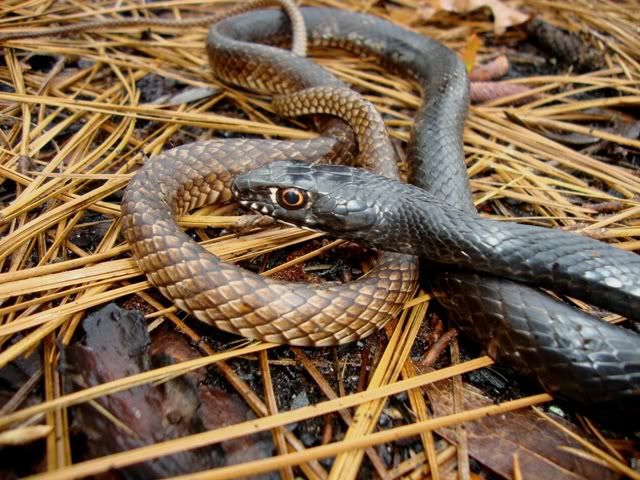
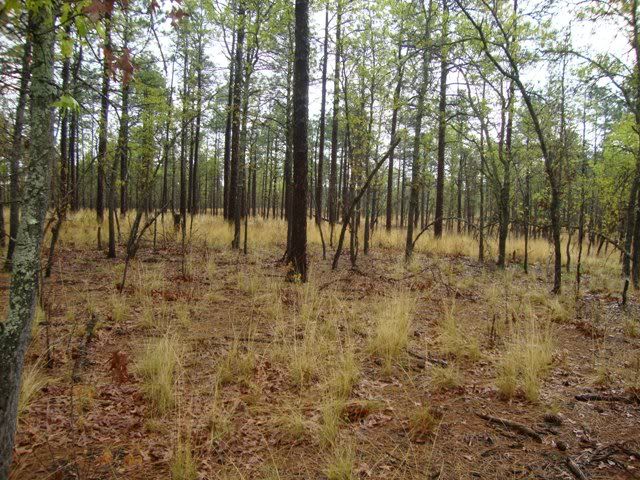
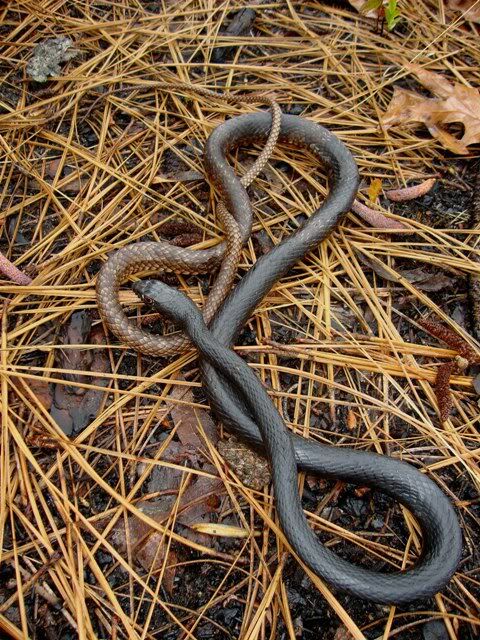

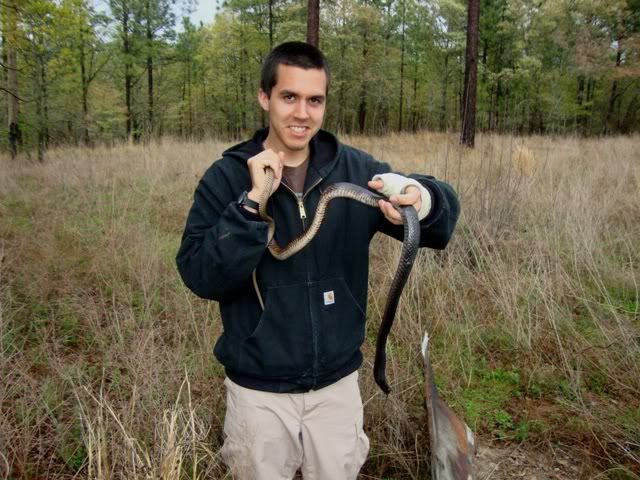
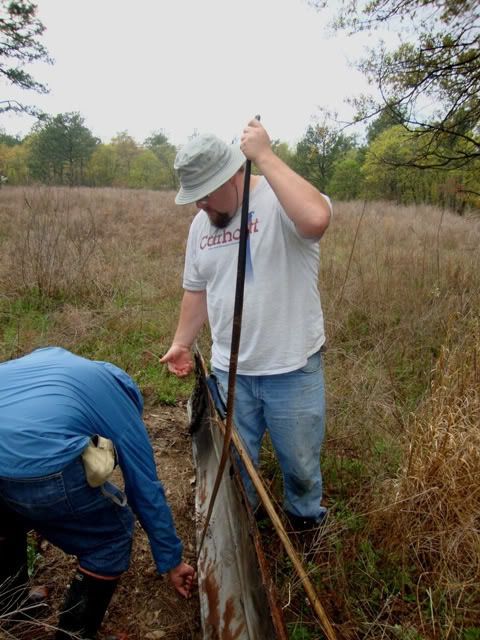

Good post. I'd heard of the Coachwhip snake but I'd never seen one.
ReplyDeleteCoachwhips are impressive animals. I'm convinced many see us via periscoping above the grass and then take off before we ever had an idea there was one close.
ReplyDeleteThanks, guys!
ReplyDeleteDave: I wouldn't be shocked at all if what you said is true. The only ones we caught on our trip were under things (tin, debris, etc.), where they couldn't see us.